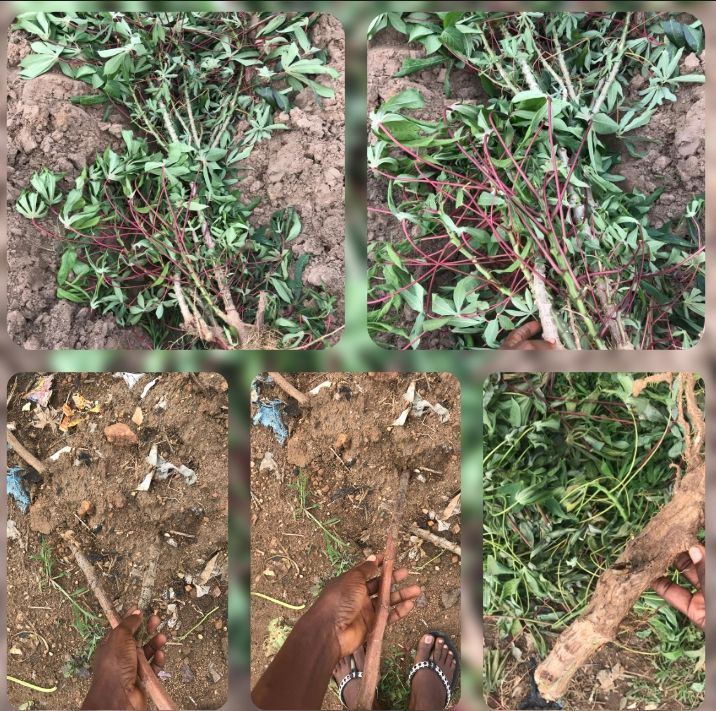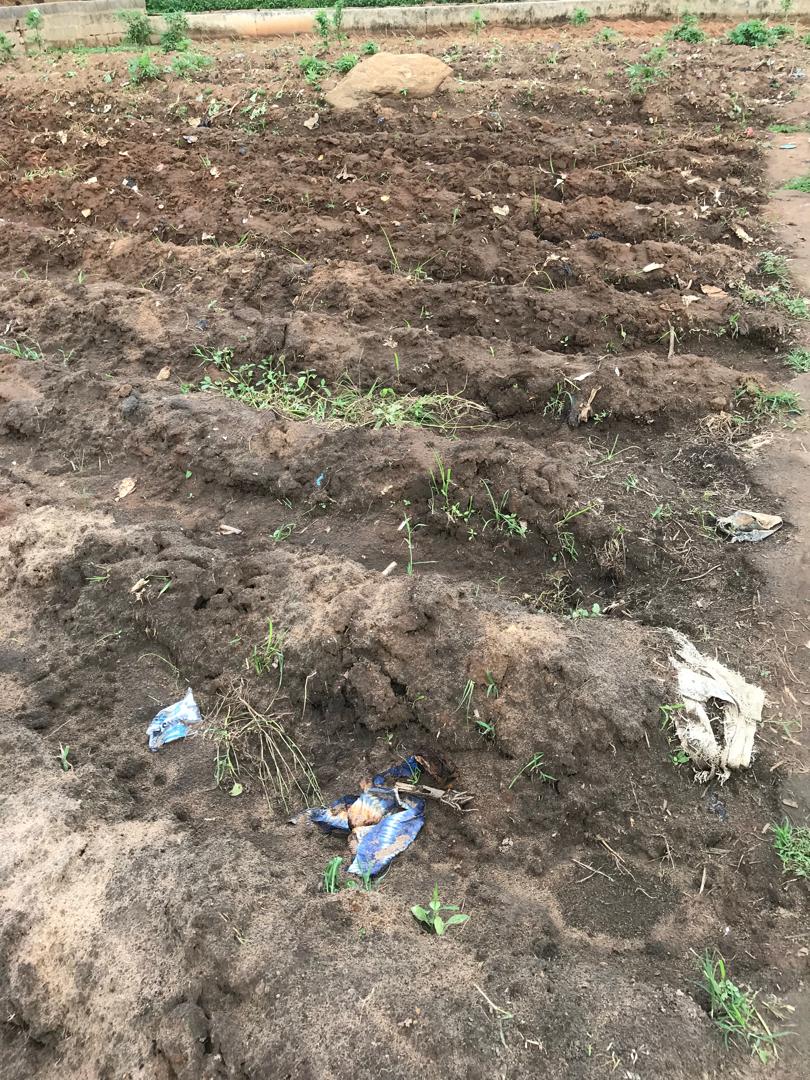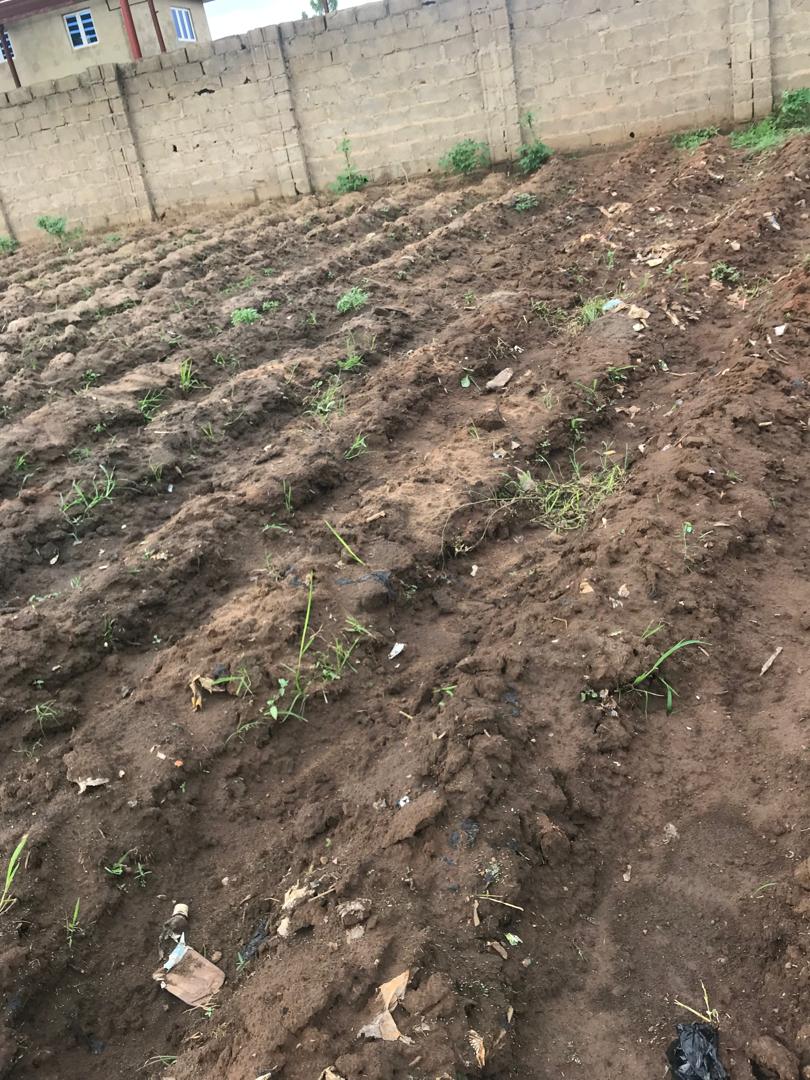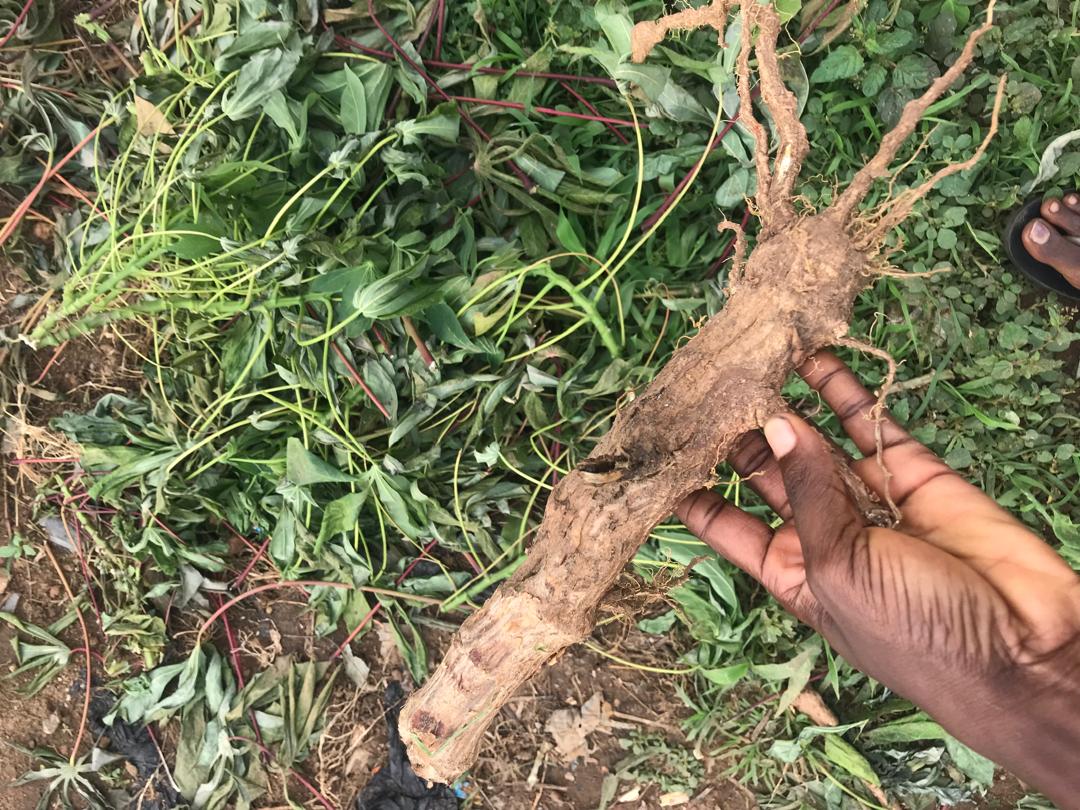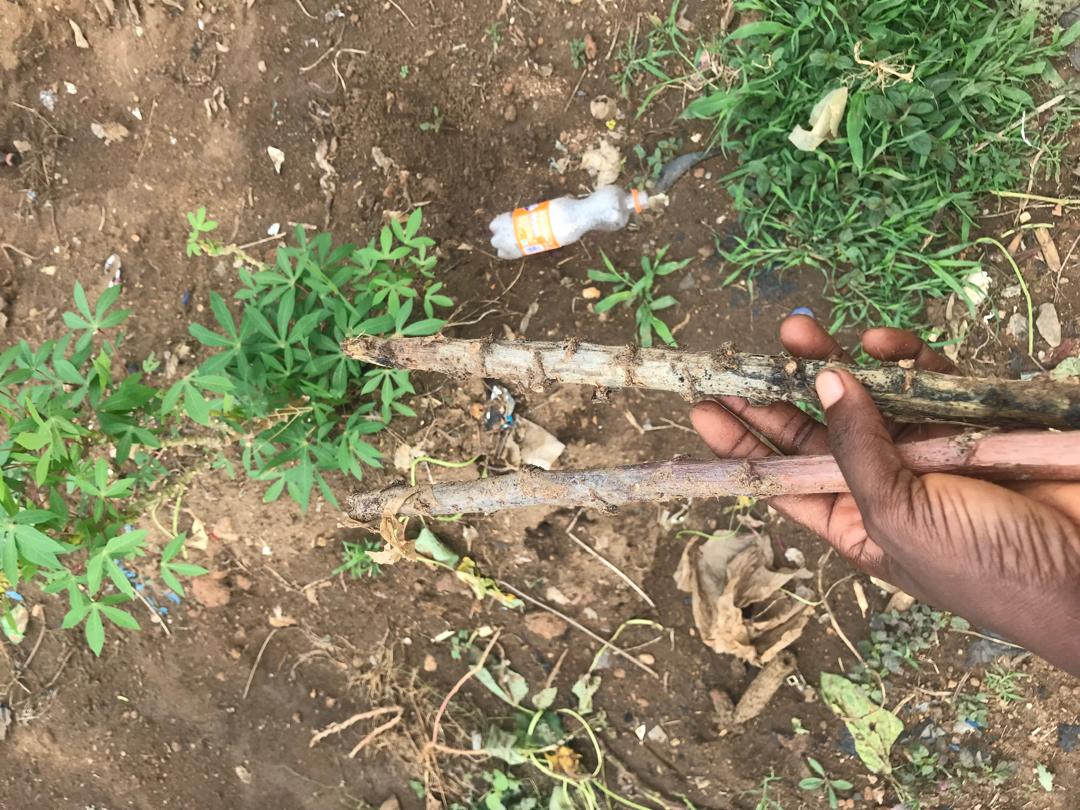Hello Hive
Happy new day to everyone. I hope that we woke up feeling energized and refreshed to embrace the activities of the new day.
Yesterday we planted cassava on the farm. It is one of the very many and important tubers to us, as the harvest from cassava is often being processed into different kinds of useful food products.
I never knew that cassava can equally be boiled and eaten directly, just like potatoes or some of the other types of tubers we eat here, until my dad showed that to me.
He showed me the different kinds of cassava we have and the importance of each of them. Some cassava contains a higher level of starch than the others; they are more poisonous and can't be eaten unless they are fermented and processed into other food products. The fermentation process removed excess starch from cassava to make it healthier as food; hence, most of the cassava meals we eat are a product of fermented cassava.
This particular type of cassava doesn't often contain much starch, and upon harvest we can boil it and eat it directly.
The bulk of the cassava we planted in our commercial farm last year was eaten and destroyed by cows. The usual herdsmen got those animals into our farms , set the farms ablaze, and uprooted the growing cassava for their beasts to feed on.
It was a really devastating experience for us, having invested so much in that farm in terms of finance and human labor. By now the tubers would have almost been ready for harvest since we have planted the 6-month engineered seed that would mature and produce tubers within such a short period.
Massive farm destruction by cattle rearers has been one of the major challenges we often have to deal with as farmers. Even the government is weak concerning how to get a permanent solution to these inhuman and destructive jihadists who call themselves herdsmen. They make farming very difficult for us, especially when we want to engage in commercial farming like this, and we moved farther away into the forest area where more land areas are located. For this year we are still handicapped and yet to decide which location will be more suitable and safer for our crops.
These other smaller farms are the ones we used for our subsistence family farm, and I often like to separate our family farm from the commercial business farms I engage in.
Over the weekend we were fortunate to have some labor friends help us with the cultivation of the land, and while we have ordered some corn seeds that are yet to arrive, we decided to plant cassava.
For this farm we are not planting the engineered cassava species; their stems are expensive to purchase, and since this is our local farm which we are not in a hurry for harvest, we are planting the normal seeds.
We got cassava stems from neighboring farms, broke them into sizes, and have continued with planting. Cassava is a very important and useful tuber for us due to the several kinds of food products it can be processed into. Besides, it is one of the cheapest tubers anyone can come in contact with. Compared to yams and potatoes, cassava meals are often cheaper and more readily available for commoners. Every year we made sure we did not miss out on planting this tuber.
There is nothing complicated about planting cassava, we use Cutlass to break off old stems and then plant them at specific intervals of the farmed ridges.
The root of the stems like this one isn't good for planting let's beware of it. Weaker and partly dried stems like the ones above are not good for planting too. Only fresh and healthy stems are meant to be planted.
